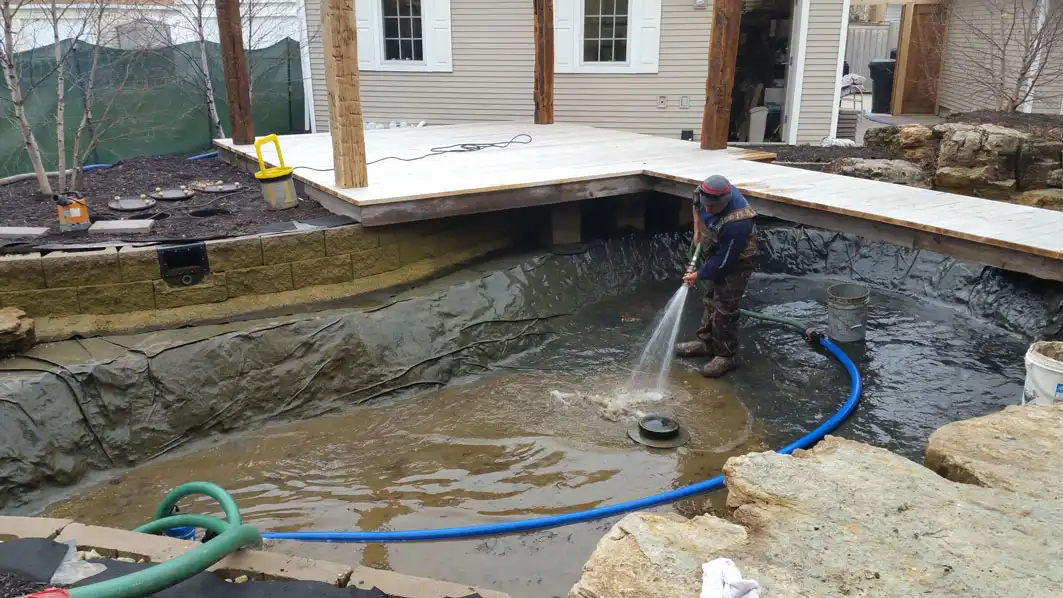Top 5 Things to Know About Submersible Water Pumps and Electricity
November 11, 2019, 0 CommentsSubmersible Pumps & Electricity: What Every Water Garden Owner Should Know
Submersible water pumps are widely used in water features, from backyard ponds to natural swimming pools. While they’re designed to operate underwater, they still present electrical risks—especially when used in spaces where people wade or swim.
At Reflections Water Gardens, we understand how crucial it is to balance beauty with safety. This guide outlines the key electrical safety considerations you should know before installing or maintaining a submersible water pump in your garden oasis.
1. Electricity and Water Don’t Mix
Even the most well-sealed pump can fail. Submersible pumps are built with cast-iron housings, sealed cables, and crimped water seals, but no system is 100% infallible.
A cracked casing or worn-out seal can allow water to reach the pump’s electrical components — potentially electrifying your pond.
That’s why submersible pumps should never be used in water features meant for swimming or wading. Specialized pumps for human-immersive ponds and pools are a safer alternative.
2. Understanding Water Seals and Cables
Submersible pumps rely on:
-
- Crimped rubber seals (no adhesives) to keep water out
- Epoxy-filled cable inlets and neoprene wrapping for waterproofing
These materials offer strong protection — but damage from age, freezing, or impact can still create electrical hazards.
3. GFCI Protection Is Non-Negotiable
To prevent electrical shock, your pump must be connected to a GFCI (Ground Fault Circuit Interrupter) outlet. These outlets shut off electricity when a power “leak” is detected — often caused by water entering an electrical system.
Tip: Older homes may still use outdated standard outlets outdoors. If you’re installing a submersible pump, have your outlet upgraded by a licensed electrician.
4. Remove the Pump in Winter
In colder climates like Illinois, submersible pumps should be removed before temperatures drop below freezing.
Frozen water can:
-
- Crack the pump’s housing or cable insulation
- Damage internal seals
- Cause invisible microfractures that increase electrical risk next season
Always inspect pumps thoroughly before spring startup or contact our team for a seasonal safety check.
5. Protect Your Pump from Debris and Damage
Your natural pond likely contains:
- Rocks
- Gravel
- Aquatic plants
- Sand
While beautiful, these elements can damage your pump if they come in contact with it. Place your pump:
- Away from heavy or sharp objects
- In a filtered, protected section of the basin
- Where it draws minimal sand or silt
Never Enter the Water with a Submersible Pump Running
Even if the unit is functioning well, do not swim or enter the pond while the pump is active.
If maintenance or object retrieval is necessary, turn off the electricity at the source and wait until all components have powered down before entering the water.
Pumps for natural swimming ponds must be specially rated for human immersion. Consult with a professional before installing one.
Understanding How Submersible Pumps Work
Submersible pumps are designed to function completely underwater. Here’s how they operate:
- The Motor – Enclosed in a sealed, waterproof casing
- The Impeller – Spins via centrifugal force to draw in water
- Discharge Pipe – Directs water upward or outward to circulate the pond
Submersible Pump Electrical Safety Checklist
Use a licensed electrician for all installations
Always plug into a GFCI outlet
Ensure watertight cable connections
Regularly inspect for cracks, corrosion, or seal failures
Follow manufacturer guidelines for placement and maintenance
Choosing the Right Submersible Pump for Your Pond
Consider these factors before selecting a pump:
| Factor | Description |
| Horsepower (HP) | Power capacity to move water |
| Flow Rate (GPM) | Gallons per minute the pump circulates |
| Head Pressure | Vertical lift distance the pump can achieve |
| Water Depth | Needed for well or pond systems |
| Electrical Load | Ensure your power source supports the pump specs |
Energy-Efficient Options
Modern pumps are more eco-friendly than ever, featuring:
- High-efficiency motors
- Hydraulic optimization
- Variable Speed Drives (VSDs) to match performance with demand
These improvements lower your energy usage and extend the life of your pump — saving you money and protecting your pond ecosystem.
Submersible Pump Maintenance Tips
- Clean the intake regularly to prevent clogging
- Inspect wiring and seals for wear or corrosion
- Lubricate moving parts (if applicable)
- Schedule annual servicing with a pond specialist
Need Help Choosing or Installing a Safe Water Pump?
At Reflections Water Gardens, we design and install elegant, safe, and sustainable water features. Whether you’re maintaining an existing pond or planning a new natural pool, our team can help you select the right equipment for your vision — and your safety.
Call (815) 955-4911 today for a consultation, or explore our full range of water garden services.


0 Comments